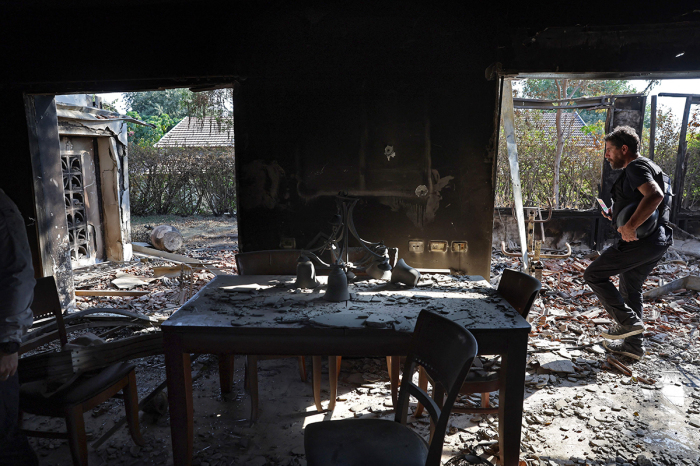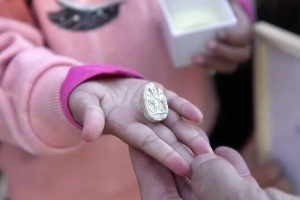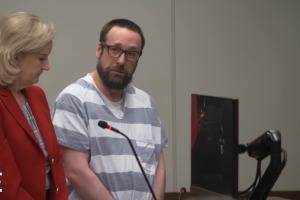Hamas terrorists ordered to kill as many people as possible, target schools in attacks: report

Newly uncovered documents reveal that Hamas terrorists were directed to kill as many people as possible, with a specific focus on elementary schools and youth centers. These meticulously rehearsed attacks resulted in a death toll exceeding 1,300 in Israel alone, according to official sources.
Israeli officials say the attacks were not a byproduct of military action but rather a central objective, as can be concluded from the documents recovered from the bodies of dead militants at the sites of the attacks, The Wall Street Journal reported.
Written orders carried by Hamas explicitly directed them to maximize human losses and take hostages, the Journal said, citing one set of orders that specifically targeted the farming community of Alumim, instructing militants to “achieve the highest level of human losses.”
Another set of orders focused on Sa’ad, a 670-person collective farming community, with the directive to “take control of the kibbutz, kill as many individuals as possible, and capture hostages.”
Details in the recovered documents also indicate that elementary schools and youth centers were among the primary targets.
Plans for attacks on communities like Kfar Aza and Nahal Oz were very specific, down to points of entry and modes of transportation for the attackers. For instance, in Kfar Sa’ad, one unit was assigned to “contain the new Da’at school,” while another was to “collect hostages” and “search the Bnei Akiva youth center.”
Hamas even conducted a public dress rehearsal of its attack on Israel, according to a propaganda video the group posted on social media on Sept. 12, The Hill reported.
The video displayed fighters using explosives to breach a replica of the Gaza-Israel border gate and going through a mock-up of an Israeli town, the Hill said, adding that the actual attacks took place by air, sea and land, targeting various towns and military posts near the border.
Those attacks are considered a significant intelligence failure for Israel, according to Bradley Bowman, a former U.S. Army officer and now senior director at the Center on Military and Political Power at the Foundation for Defense of Democracies, who suggested that there were signs that should have been detected to prevent the attack.
These findings contradict Hamas’ statements, which claimed that women and children were not to be targeted. The Israeli Defense Forces and local communities discovered a trove of documents proving otherwise.
“The level of specificity would cause anyone in the intelligence field’s jaw to drop,” the New York Post quoted a source in the Israel Defense Forces as saying.
Israeli officials pointed out that Hamas had accumulated a significant amount of intelligence about its targets. Some documents included aerial views of communities and detailed attack plans outlining local security arrangements, such as the volunteer guard force in Sa’ad, which could be reinforced by Israeli army units.
One recurring element in the attack plans was the instruction to herd hostages into community dining halls. This strategy was not just a theoretical directive; it was executed in the town of Be’eri, where residents were later rescued by Israeli troops.
Survivors of the Hamas attacks recently shared their experiences during a webinar hosted by the Combat Anti-Semitism Movement.
Michal Rahav, a resident of kibbutz Nirim, recalled rushing her children to a safe room in their home, ready to defend their lives as gunshots and alarms filled the air. Galia Sopher, another survivor from kibbutz Mefalism, was camping with her daughters when the attack commenced; without a shelter nearby, she shielded her children with her own body.
As gunshots and explosions came closer, families were left to fend for themselves. Rahav’s husband patrolled their house with a weapon while she readied her children to fight back. Sopher and her family remained trapped in a hot, dark shelter, listening to the sound of gunfire outside.
Both women described a sense of unexpectedness and horror, stating that they had no prior indications that such a devastating attack was imminent. They also recounted feeling utterly alone and isolated during the attacks, with Rahav even resorting to posting on Facebook for help as terrorists roamed her home.
Both families were eventually evacuated, although not before enduring hours of anxiety and terror. Rahav later found her home “broken and shattered,” an apt metaphor, she said, for their current reality.
While the Israeli government has declared a “complete siege” of Gaza and initiated the evacuation of up to 1.1 million Palestinians from the northern Gaza Strip, Hamas has dismissed these warnings, urging residents to “stand firm.”
Since Hamas attacked Israel over a week ago, at least 1,300 deaths have been reported in Israel, including 29 Americans killed and others taken hostage. Another 2,450 people have been killed in Gaza, according to Hamas' health ministry.





























